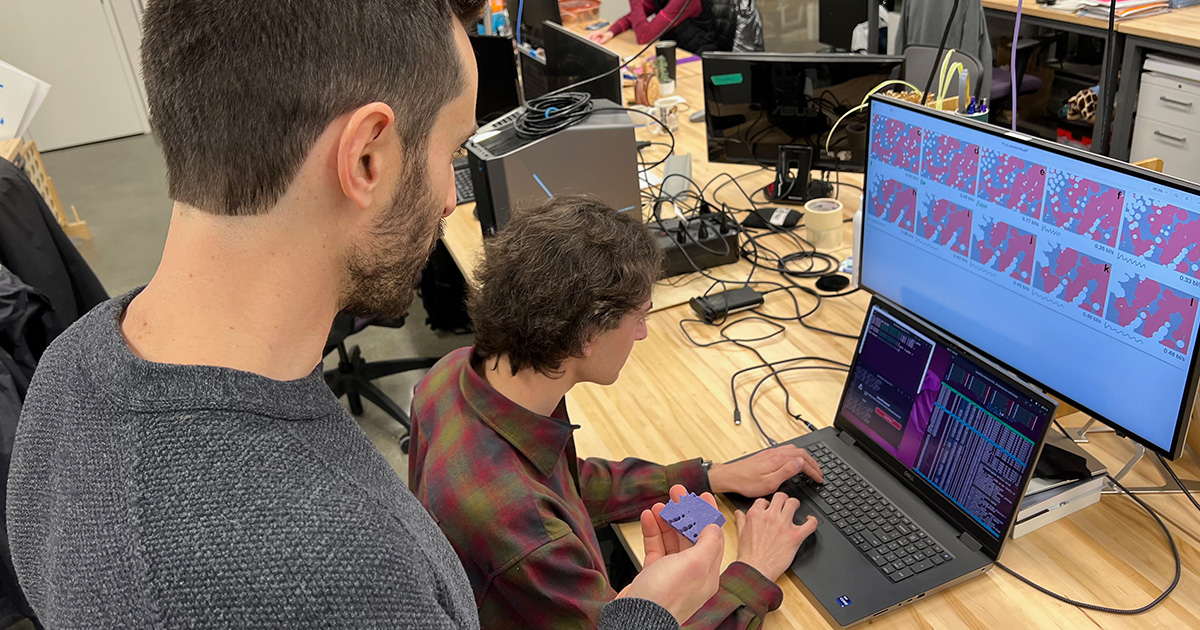McCormick Prof. Sam Kriegman and his lab assistant David Matthews recently developed a one-of-a-kind artificial intelligence program that builds a robot in seconds.
This program is the first AI to be able to intelligently design other robots. The pair spoke with The Daily about their groundbreaking work, describing what is at the root of this technology and their passion.
This interview has been edited for clarity and brevity.
The Daily: What inspiration drives your work in evolutionary robotics?
Kriegman: Evolutionary robotics is a fascinating field. We aim to understand how complex behaviors can emerge from simple rules over periods of time. By simulating evolution and natural selection, we create robots that optimize design and function. Xenobots, our recent creation, are a new form of life, shaped and designed through evolutionary algorithms to achieve specific tasks.
The Daily: How did you come to realize the potential of AI and evolutionary algorithms in creating these biological robots?
Kriegman: The journey began with an exploration of robotics, which mimics the movement and functions of animals. Robots are essentially artificial animals that move through the world in various ways. This connection led us to delve into the intersection of AI, biology and mechanical engineering. AI allows us to bridge computer science with the physical world in new and never-before ways.
Matthews: You can understand systems by building them. Robotics connects computer science with the physical medium because it intersects with a lot of different fields. You can do theoretical research where you’re using mathematics, and then you can also do more applied sciences where you’re connecting to biology or mechanical engineering, but robotics is more accessible.
The Daily: What makes your work stand out, and what makes it accessible to a wider audience?
Matthews: What we have here could be a middle school arts and crafts project because it’s accessible in that sense. Our platform can be run on standard computers, and the tools to create these robots are relatively inexpensive. You can 3D print the robot designs or build them with readily available materials. We aim to make it an educational tool that spans from simple crafts to advanced scientific research.
The Daily: Can you share a bit about the “aha” moment when you realized you had achieved something extraordinary?
Kriegman: Nobody believed this was possible, including myself, at least not in the near future. The realization of our achievement happened gradually, much like an ape discovering the use of tools – a significant leap in technology with transformative potential for engineering. Evolution can be controversial because many can’t grasp long time scales and haven’t witnessed it. With David’s work, we can now see it happening. Questions like ‘What if we put it in water? What would it grow into?’ can be answered with David’s computer program, providing a new tool for exploration.
Matthews: It’s hard when you’re in the weeds sometimes to even tell how important or how big of a step forward it is. I see the vision of how this could play out and, wow, we could really revolutionize how everyone could design geometries of moving systems, not just robots but everything and anything that moves. This is the first step on that journey. If we don’t take the next steps, what we’re doing won’t go anywhere.
The Daily: How do you view the intersection of AI and robotics in the context of ethical and societal concerns?
Kriegman: A hammer can be used for good and bad. Ethical discussions and vigilance are essential due to its potential biases and unintended consequences. AI can have biases and unwanted consequences, so we need to tread carefully and use it vigilantly. If we just blindly accept that the AI is good, we’re going to end up in situations where AI makes decisions and there’s no human to double-check them. In our research, we control it on a computer, reducing takeover concerns. Thanks to David’s work, carbon footprint is less of an issue. Optimism is crucial in our approach.
The Daily: What lessons can we learn from your work and its potential applications in the real world?
Kriegman: We must think beyond the initial excitement and consider the long-term consequences of integrating AI into various aspects of our lives. In the future, we could use large language models or image generation systems to design robots and incorporate simulation knowledge, making them more capable of interacting with the world.
Email: samantahabashy2026@u.northwestern.edu
Twitter: @HabashySam
Related Stories:
— AI stretches its legs: NU researchers use AI to design robots
— McCormick professor develops new lung cancer detection test
— Q&A: Faculty Senate President Regan Thomson talks Ryan Field, priorities


















